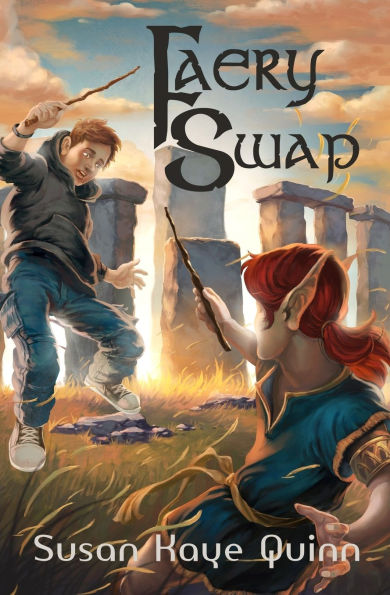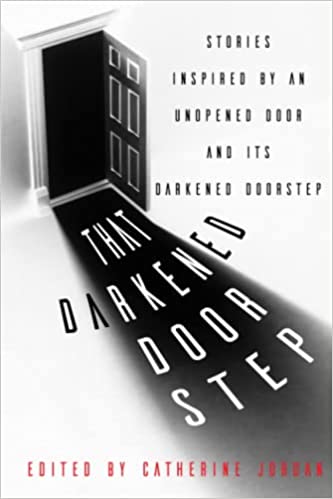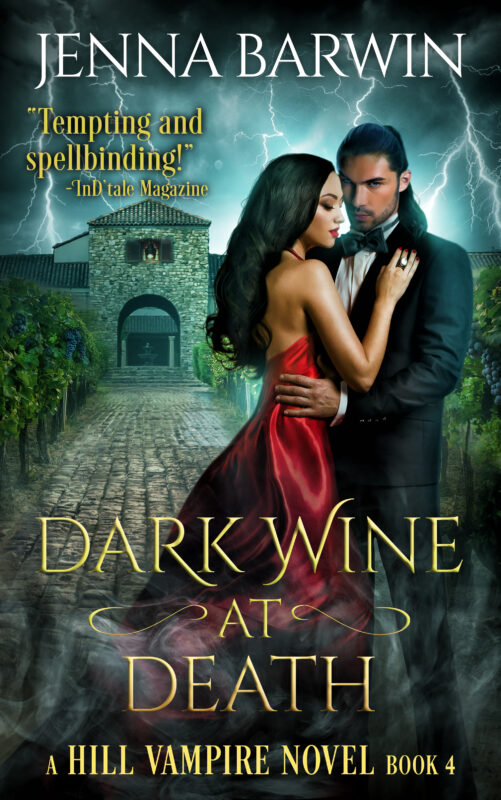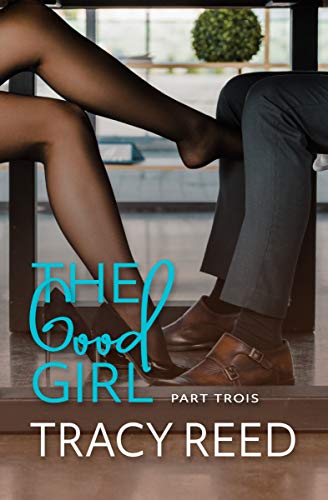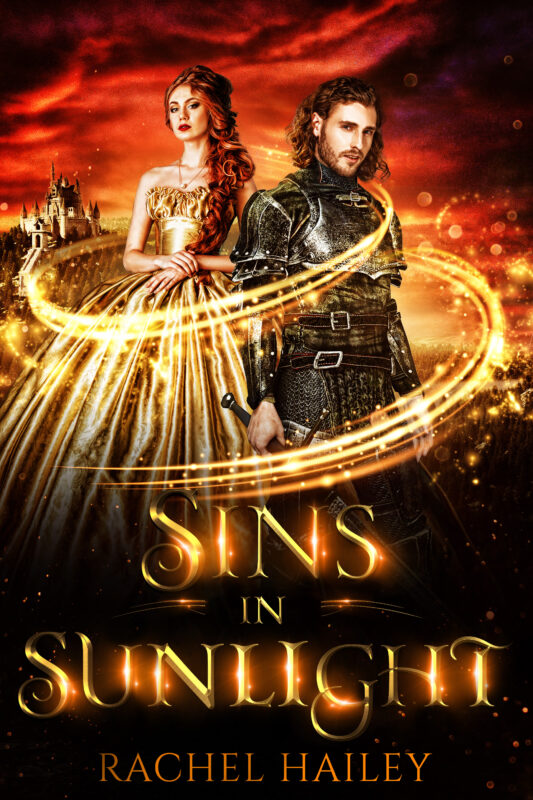Ilona’s Wolf: #free @amazon through Dec. 20 by @LyndiLamont
December 16, 2018 by Lyndi Lamont in category The Romance Journey by Linda Mclaughlin tagged as fairy tales, free, Ilona's Wolf, Paranormal RomanceMy steamy werewolf novella, Ilona’s Wolf, will be free at amazon.com starting today and running through Dec. 20! If you’re looking for a hot read on a cold night, this story is for you!
Ilona’s Wolf

Kingdoms & Legends, Part 1
Blurb:
Imagine a world filled with magic, a tormented knight, a damsel in distress, an evil sorcerer…
While picking herbs in the woods, Princess Ilona is rescued from a woodsman by a wolf. When the creature licks her wounds, it is suddenly transformed into a man. A very handsome, very naked man who makes passionate love to her in a glade.
Cursed by an evil wizard, Rolf was trapped in wolf form until he tasted the blood of a royal. Now he must escort the princess on a hazardous journey back to the castle to stop an ill-fated wedding.
Passion flares between them, but both know there is no future for Ilona and her werewolf. Or is there? In a world where magic and passion combine, anything may be possible.
Buy (or borrow on Kindle Unlimited) at: Amazon US, Amazon AU, Amazon Canada, and Amazon UK.

Wishing everyone a very happy holiday season!
Lyndi Lamont
A New World of Food: #Thanksgiving Traditions
November 23, 2018 by Linda McLaughlin in category The Romance Journey by Linda Mclaughlin tagged as history, holidays, ThanksgivingI hope you had a good Thanksgiving yesterday. This holiday has always been one of my favorites, if only for the wonderful food. I do love a Thanksgiving dinner with turkey and all the trimmings, but turkey is a lot of work and yields a lot of leftovers, esp. when you only have four people at dinner. So this year we opted for beef roast with some of the trimmings: mashed potatoes, gravy, green bean casserole, garlic bread, and sauteed asparagus. Plus pumpkin pie, of course. It’s my theory that if the Pilgrims had had beef, there would have been no turkey dinner. They were English, after all!
And as a history freak, I love that so much of the traditional Thanksgiving food are native to the Americas.
The food supply expanded when Europeans “discovered” the New World. Prior to Columbus’s first voyage, there were no turkeys, potatoes, yams and sweet potatoes, tomatoes, pumpkins, cranberries or maize, i.e. Indian corn, in the Middle Ages. There was a cereal grain called corn, but it’s more like wheat, not like the ears of corn we’re used to. Halloween Jack o’ Lanterns were originally made with turnips!
And there was no chocolate. Chocolate is native to the Americas, so the Spaniards were the first Europeans to encounter it. It became popular at court after the Spanish added sugar or honey to sweeten the natural bitterness. From there, chocolate spread through Europe in the 1600’s and grew into the international obsession is has become today.
Can you imagine a world without chocolate? I really wouldn’t like that at all!
What’s your favorite Thanksgiving treat?
Linda McLaughlin
Note: This is normally the day I blog about OCC/RWA online classes, but we will be dark in Dec. and Jan. Class blogs will resume in January.
0 0 Read moreWhy I Love the Internet #research #birthstones #history by @LyndiLamont
July 16, 2018 by Linda McLaughlin in category The Romance Journey by Linda Mclaughlin tagged as birthstones, emeralds, history, Internet research, Linda McLaughlin, Lyndi Lamont, vintage jewelryI’ve been doing research on birthstone history and the 7th Cavalry for a new book, and I’m reminded again of how much I love the Internet.
When I started writing, the Internet was just barely starting, so I had to rely on print sources. The research for my first historical romance, Rogue’s Hostage, took a long time. Some questions I had weren’t answered until my husband and I made a trip to Quebec City in Canada! (Plus it’s always fun to see the places you’re writing about. Any excuse for a chance to travel.)
In any case, the Internet is now chock full of wonderful information for writers to access in minutes or hours, rather than days or weeks. Ah, ye old inter-library loan.
Anyway, I had decided I needed a valuable piece of jewelry for the new plot and thought it would be cool to connect it to a character’s birthstone. But how old was the concept of birthstones?
Quite old, as it turns out. Apparently the concept of assigning gems to categories goes back to the Old Testament when Aaron’s breastplate had 12 gems on it, each representing one of the tribes of Israel. In the Middle Ages, Jewish jewelers transferred the gems to the signs of the Zodiac and introduced them to Europe. It wasn’t long before the gems became associated with months of the year rather than the pagan astrological signs. You can read more about birthstone history here.
But are the birthstones still the same today? Not exactly. Here’s a graphic of the modern birthstone system, though there are now subsidiary gems assigned to the months as well. The “modern” list dates to 1912.

Birthstone Chart from Depositphotos_77526296_m-2015
Again, thanks to our wonderful World Wide Web, I was able to easily locate a Gregorian Birthstone poem that was published by Tiffany and Co. in 1870, perfect for my 1893-set Western historical romance. Most are the same, but not all. March, June, August and December vary.

golden vintage brooch with emeralds isolated on white, Deposit Photos Image ID: 194305906
Copyright: vi0222
But which gemstone to choose? Which was the most valuable at the time?
According to an article written in 1949 that some lovely person digitized and uploaded the Internet, I learned that “from 1872 to the present day (1949) the emerald has been the most expensive stone.”
Here’s the verse for the month of May:
Who first beholds the light of day
In spring’s sweet flowery month of May
And wears an emerald all her life
Shall be a loved and happy wife.
Great, but what kind of jewelry?
I talked to my neighbor, whose father was a jeweler, and she suggested a brooch. They’re not very popular now, but were in the 19th century. I found this photo of a vintage brooch at Deposit Photos and I think it will be perfect for my book, since it has not one but two large emeralds.
Would someone kill for that? Maybe, if he were desperate enough.
What are you researching?
Linda McLaughlin / Lyndi Lamont
Website/blog: https://lindalyndi.com
What’s for Dinner? Depends on the Century #Food #History #Research by @LyndiLamont
November 16, 2017 by Linda McLaughlin in category The Romance Journey by Linda Mclaughlin tagged as food, history, Medieval Underpants, research, ThanksgivingSince Thanksgiving is a week away, it’s only natural that many of us are thinking about food. I love autumn and all the wonderful dishes that make up the traditional Thanksgiving feast, but did you know how many of them are New World foods?

Roasted Turkey On Harvest Table – c. evgenyb – license from Bigstock.com
The food supply expanded when Columbus “discovered” the New World. There were no potatoes, yams, tomatoes, pumpkins turkeys or maize (Indian corn) in the Middle Ages.
In Medieval Underpants and Other Blunders: A Writer’s (& Editor’s) Guide to Keeping Historical Fiction Free of Common Anachronisms, Errors, & Myths, author Susanne Alleyn takes a swipe at Cinderella’s pumpkin carriage in the Disney movie. The carriage it doesn’t bother me so much, since Disney’s Cinderella is apparently set in the 18th century, if the gowns are anything to go on. At least it’s an improvement on the scene in Snow White and the Seven Dwarfs where the Huntsman leads Snow White into an American forest. I’m pretty sure I spotted a raccoon and an alligator. (Known fact: You can’t trust Hollywood when it comes to research.)
There was also no chocolate, no tea and no coffee in the Middle Ages. Peasants drank beer at every meal. The nobility drank wine. The introduction of coffee and tea in the 17th century helped to sober up Europe for the Industrial Revolution, thank goodness. Even the sober Pilgrims and Puritans drank beer in the 1600’s. If you’re writing a Medieval romance, don’t show your characters drinking tea, even if it’s herbal. The word “tea” comes from the Chinese, and didn’t enter the English language until around 1655. Herbal infusions, sometimes called tisannes, were mainly used for medicinal purposes.
Chocolate is native to the Americas, so the Spaniards were the first Europeans to encounter it. It became popular at court after the Spanish added sugar or honey to sweeten the natural bitterness. From there, chocolate spread through Europe in the 1600’s, and how thankful I am that it did. The best hot chocolate I’ve ever had was the dark, molten variety you find in France.

coffee & chocolate, image licensed from Deposit Photos
Coffee drinking started in Arabia in the middle of the 15th century and had spread to Europe in the 16th century. It became more popular after 1600 when Pope Clement VIII declared it a “Christian” beverage. When Britain cut off America’s tea supply during the War of 1812, Americans turned to coffee and we’ve been a coffee-drinking nation ever since.
Tea comes from Asia and was introduced to Holland in 1610, in common use by 1675; introduced to England about 1660, where it steadily increased in popularity. The ritual we know as afternoon tea didn’t start until the 1840s. Afternoon tea was for the idle rich and includes finger sandwiches, scones and pastries. High tea, which isn’t nearly as grand as it sounds, was the name for the evening meal used by the working class and features a hot dish like a meat pie or stew.
Happy Thanksgiving!
Linda McLaughlin w/a Lyndi Lamont
Website: https://lindalyndi.com
News Flash: e-Books Older Than You May Think by Linda McLaughlin
August 16, 2017 by Linda McLaughlin in category The Romance Journey by Linda Mclaughlin tagged as Amazon, e-books, Janet Cornelow, Kindle, Linda McLaughlin, Project GutenburgA few weeks ago, I wrote a blog post about my preference for e-books over print. In it, I talked about reading my first e-book in 1999. Some of the commenters were amazed to hear that (so young) and author Alina K. Field suggested I write about e-book history. This blog post is a revised version of one I wrote in three years before.
News flash: e-books have been around since at least 1971 when Project Gutenberg started digitizing public domain works. The US Declaration of Independence was the first document chosen.

My dear departed friend Janet Cornelow reading on her eBookwise, 2006
I started reading e-books in 1999 on my laptop. I’d gone to the Romance Writers of America conference in Chicago and signed up to moderate a panel. By sheer serendipity, I was assigned to moderate the e-book panel presented by Janet Lane Walters and the late great Jane Toombs, two true e-book pioneers. I came away with an interest in e-books and a couple of samples on 3 1/2 inch diskettes. (Remember those?)
Back home, I read the books on my laptop using either Adobe Acrobat or an Internet browser, depending on whether the format was PDF or HTML. I’m a voracious reader and book buyer, and the house was already full of print books. The idea of being able to store book on my computer seemed like a godsend to me. A way to buy and hoard store books without cluttering my already cluttered house. I was hooked!
Commercial e-books were in their infancy, but dozens of small publishers sprang up, most of them no longer in business. Ellora’s Cave was the best known of the early small e-book houses. My publisher, Amber Quill Press, started in 2002 and closed its doors in 2015. Romance readers got hooked early, and small presses deserve credit for reviving the paranormal romance genre, which NY had lost interest in, for feeding the erotic romance craze and for pioneering gay erotic romance.
While e-book readers were a tiny minority at first, the growth became explosive, often 50% in a year, though sadly has slown since. The numbers didn’t start to hit critical mass until Amazon got into the game with the Kindle 1 in late 2006, though Sony gets the credit for having the first available e-ink reader. There were commercial e-readers available before the Sony Reader and the Kindle: the original Rocket e-book reader, its successor the RCA Gemstar 1100, requiring a stylus to make selections. (You had to press a lot harder than on a tablet.) Also, books could be read on the little PDAs, like the Palm Pilot and Pocket PC. I read a lot on my Sony Clie.

Kindle 1
My RCA Gemstar gave out shortly before the release of the Kindle1. I briefly considered getting a Sony reader, but decided that Amazon had already shown a commitment to the book business which I didn’t see Sony making, so decided to order the Kindle, despite the $399 price. I loved it from the beginning. There was no touch screen, just a wheel for scrolling up and down plus the keyboard. It seems unwieldy now.
Amazon’s real innovation, the one that made it the leader in the industry, was the one-click purchase followed by wireless delivery directly to your device. No more having to buy from the publisher’s site–with different accounts at each site, were we dedicated ebook readers or what?–download the books to your computer and then side load your e-books using the USB cable. Sadly, one-click ordering tolled the death knell of many small publishers.
One-click buying took e-book reading beyond the limits of the technologically proficient among us. The ability to download a sample before buying was (and still is) another popular feature. I was an early adopter of the Kindle 1 and still have my device, though it’s no longer in use. I’ve moved on to a Kindle Keyboard and the iPad.
Do you read e-books? If so, when did you start and what device(s) do you use?
Linda McLaughlin
Website: https://lindalyndi.com
2 0 Read moreAffiliate Links
A Slice of Orange is an affiliate with some of the booksellers listed on this website, including Barnes & Nobel, Books A Million, iBooks, Kobo, and Smashwords. This means A Slice of Orange may earn a small advertising fee from sales made through the links used on this website. There are reminders of these affiliate links on the pages for individual books.
Search A Slice of Orange
Find a Column
Archives
Featured Books
FAERY SWAP
Warrior faery princes can be very stubborn. Especially when they possess your body.
More info →THE DARKEN DOORSTEP
When faced with a darkened doorstep, think before you walk through.
More info →DARK WINE AT DEATH
A seductive spy. A powerful vampire. A traitor in their midst...
More info →Newsletter
Contributing Authors
Search A Slice of Orange
Find a Column
Archives
Authors in the Bookstore
- A. E. Decker
- A. J. Scudiere
- A.J. Sidransky
- A.M. Roark
- Abby Collette
- Alanna Lucus
- Albert Marrin
- Alice Duncan
- Alina K. Field
- Alison Green Myers
- Andi Lawrencovna
- Andrew C Raiford
- Angela Pryce
- Aviva Vaughn
- Barbara Ankrum
- Bethlehem Writers Group, LLC
- Carol L. Wright
- Celeste Barclay
- Christina Alexandra
- Christopher D. Ochs
- Claire Davon
- Claire Naden
- Courtnee Turner Hoyle
- Courtney Annicchiarico
- D. Lieber
- Daniel V. Meier Jr.
- Debra Dixon
- Debra H. Goldstein
- Debra Holland
- Dee Ann Palmer
- Denise M. Colby
- Diane Benefiel
- Diane Sismour
- Dianna Sinovic
- DT Krippene
- E.B. Dawson
- Emilie Dallaire
- Emily Brightwell
- Emily PW Murphy
- Fae Rowen
- Faith L. Justice
- Frances Amati
- Geralyn Corcillo
- Glynnis Campbell
- Greg Jolley
- H. O. Charles
- Jaclyn Roché
- Jacqueline Diamond
- Janet Lynn and Will Zeilinger
- Jaya Mehta
- Jeannine Atkins
- Jeff Baird
- Jenna Barwin
- Jenne Kern
- Jennifer D. Bokal
- Jennifer Lyon
- Jerome W. McFadden
- Jill Piscitello
- Jina Bacarr
- Jo A. Hiestand
- Jodi Bogert
- Jolina Petersheim
- Jonathan Maberry
- Joy Allyson
- Judy Duarte
- Justin Murphy
- Justine Davis
- Kat Martin
- Kidd Wadsworth
- Kitty Bucholtz
- Kristy Tate
- Larry Deibert
- Larry Hamilton
- Laura Drake
- Laurie Stevens
- Leslie Knowles
- Li-Ying Lundquist
- Linda Carroll-Bradd
- Linda Lappin
- Linda McLaughlin
- Linda O. Johnston
- Lisa Preston
- Lolo Paige
- Loran Holt
- Lynette M. Burrows
- Lyssa Kay Adams
- Madeline Ash
- Margarita Engle
- Marguerite Quantaine
- Marianne H. Donley
- Mary Castillo
- Maureen Klovers
- Megan Haskell
- Melanie Waterbury
- Melisa Rivero
- Melissa Chambers
- Melodie Winawer
- Meriam Wilhelm
- Mikel J. Wilson
- Mindy Neff
- Monica McCabe
- Nancy Brashear
- Neetu Malik
- Nikki Prince
- Once Upon Anthologies
- Paula Gail Benson
- Penny Reid
- Peter J Barbour
- Priscilla Oliveras
- R. H. Kohno
- Rachel Hailey
- Ralph Hieb
- Ramcy Diek
- Ransom Stephens
- Rebecca Forster
- Renae Wrich
- Roxy Matthews
- Ryder Hunte Clancy
- Sally Paradysz
- Sheila Colón-Bagley
- Simone de Muñoz
- Sophie Barnes
- Susan Kaye Quinn
- Susan Lynn Meyer
- Susan Squires
- T. D. Fox
- Tara C. Allred
- Tara Lain
- Tari Lynn Jewett
- Terri Osburn
- Tracy Reed
- Vera Jane Cook
- Vicki Crum
- Writing Something Romantic
Affiliate Links
A Slice of Orange is an affiliate with some of the booksellers listed on this website, including Barnes & Nobel, Books A Million, iBooks, Kobo, and Smashwords. This means A Slice of Orange may earn a small advertising fee from sales made through the links used on this website. There are reminders of these affiliate links on the pages for individual books.


